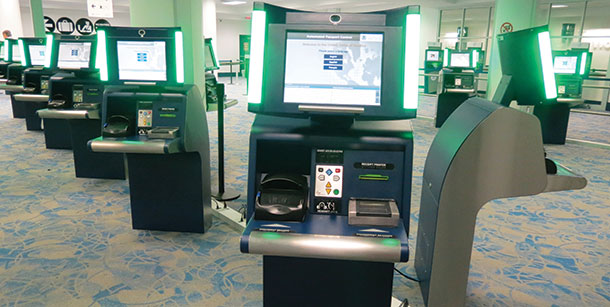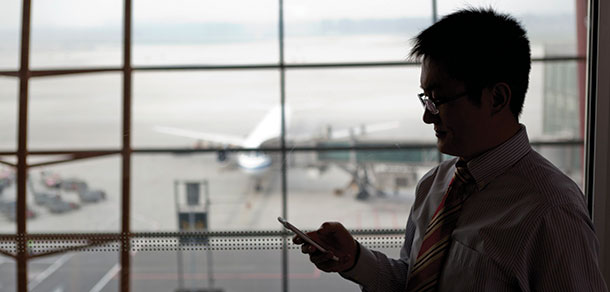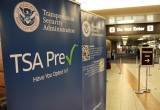Identity and automation customize travel experience
27 January, 2015
category: Biometrics, Contactless, Government, Library, NFC, Transit

Streamlined border control
From baggage to borders, airports are notorious for bottlenecks. Just the mention of the word “customs” is likely to elicit a groan from any international traveler, with the term conjuring images of winding lines, excruciating waits and missed connecting flights.
But there are efforts under way to automate the border control process through the use of kiosks and biometrics. SITA’s automated border control kiosks are in place at a number of airports worldwide, speeding the process of getting travelers through immigration.
In February 2014, the Orlando International Airport became the first U.S. airport to implement Automated Passport Control Kiosks to serve visitors from 38 countries as part of the Visa Waiver Program.
International passengers provide their travel documents, biometric data and customs declarations at the kiosks before speaking to a border patrol officer at an immigration counter.
The kiosk features a reader where passengers place their passports, and it uses eye-finding technology to detect the passenger’s height so that the camera, fingerprint reader and other devices are properly positioned.
SITA’s findings in Orlando suggest that the kiosks provide a more than 300% improvement on passenger throughput when operating at peak capacity.
In Europe, airports are rolling out gates that support ePassports, reading the chip encoded with passenger demographic and biometric data. The ePassport gates use facial recognition technology to compare a passenger’s face to the photo stored on the passport’s chip.
ePassports have yet to achieve their full potential, though, because international standards still need to be implemented to protect the privacy of biometric information used from one country to another, Peters says. “These things tend to take decades rather than years,” he adds.
Even as new identity technologies are reshaping passport inspections, some experts contend that a completely digital passport or biometric-based identification system is still a long way off.
Tim Klabunde, director of solutions marketing for Datacard Group’s government vertical team, believes that efforts will continue to revolve around tangible passport booklets. “I think it will be a while before we see international travel using a mobile-based credential,” he says.
There are still unanswered questions around the trust in mobile, and additional infrastructure is required to support mobility, says Mark Joynes, director of product management for PKI, government and international ID solutions at Entrust, an authentication software platform that is part of Datacard. “People are still very much in love with the physical,” Joynes says.
Joynes points out that regardless of the amount of technology that goes into airport security, the bulk of people caught at border patrol are pulled out of line because of their behaviors, such as sweating or nervousness. “The personal, face-to-face element is really important,” Joynes says.
Technologists have the capability to produce secure technologies that can be tied to a biometric for individuals. “We’re on the verge of capturing everything needed to facilitate a completely automated process. It’s the adoption of the back-end systems that still needs to be put in place,” Klabunde says.
Still, systems will need to be set up for special cases, such as when a traveler warrants additional screening or a passenger is on a no-fly list.




